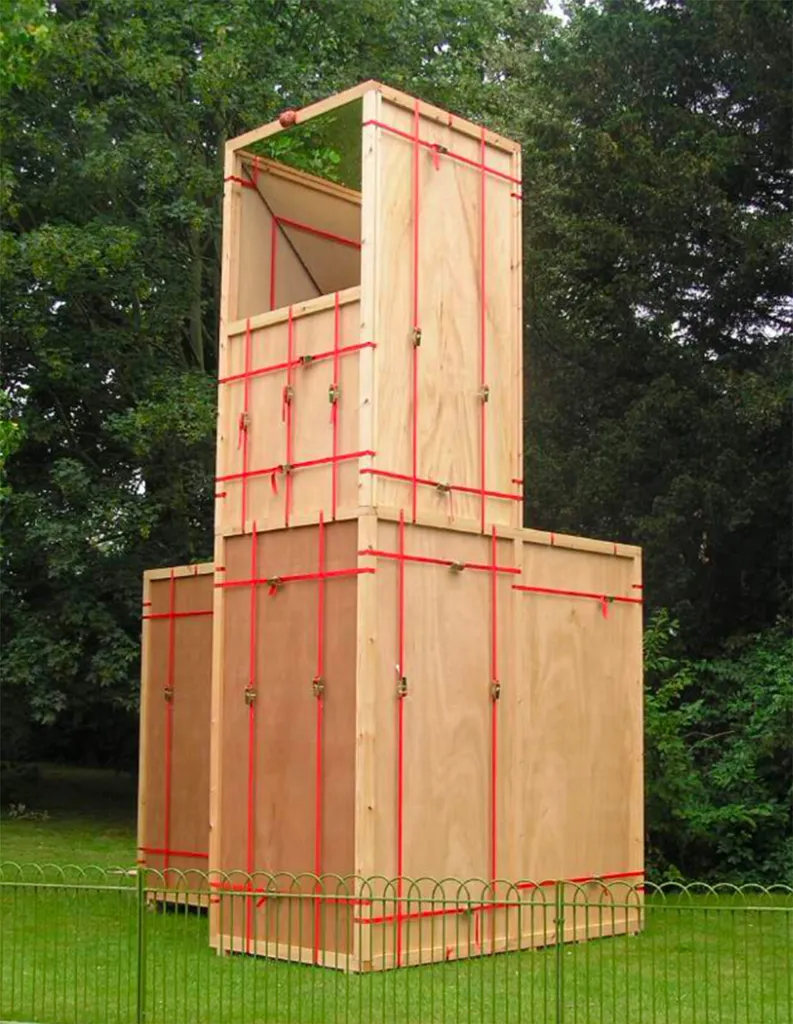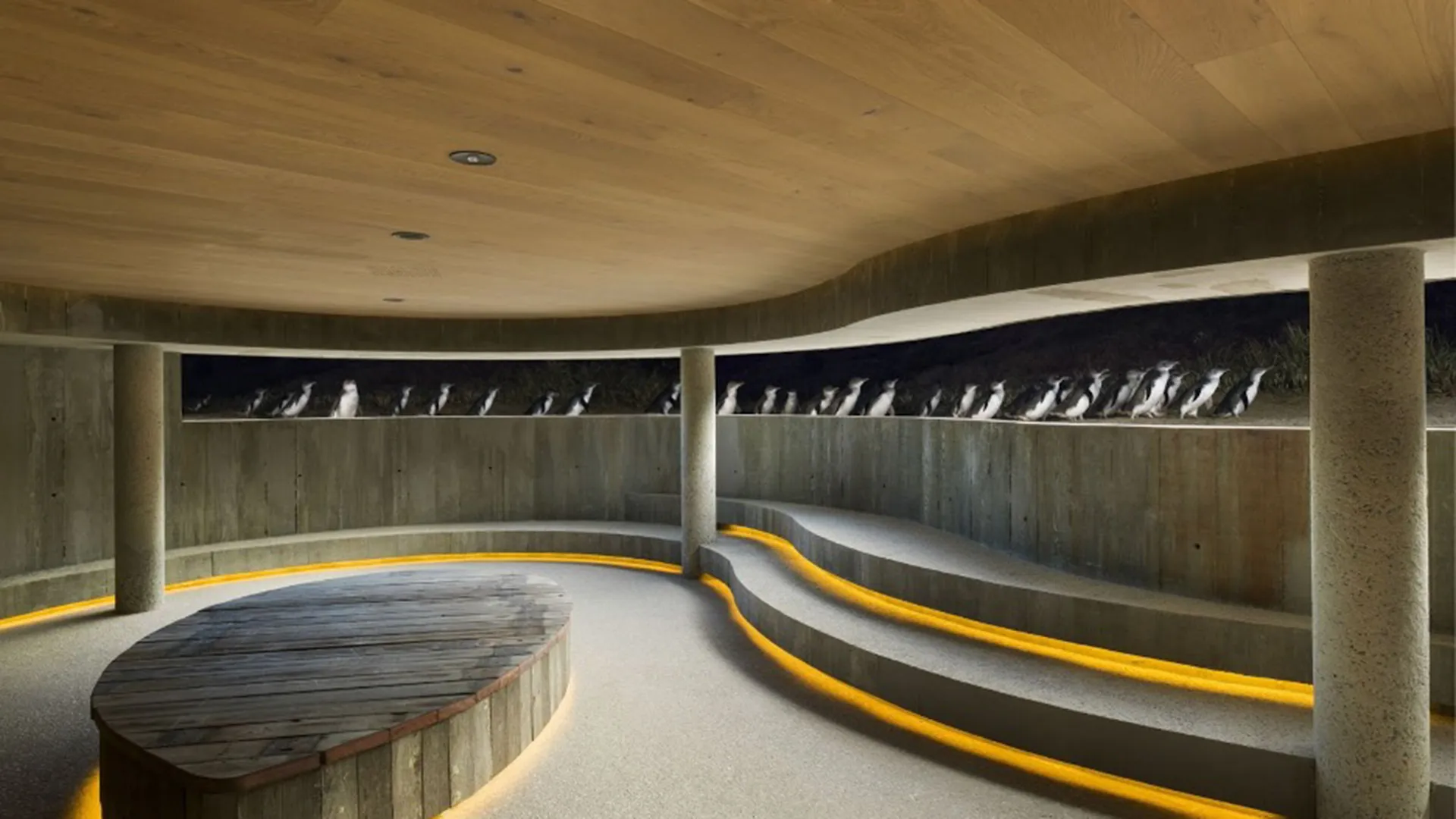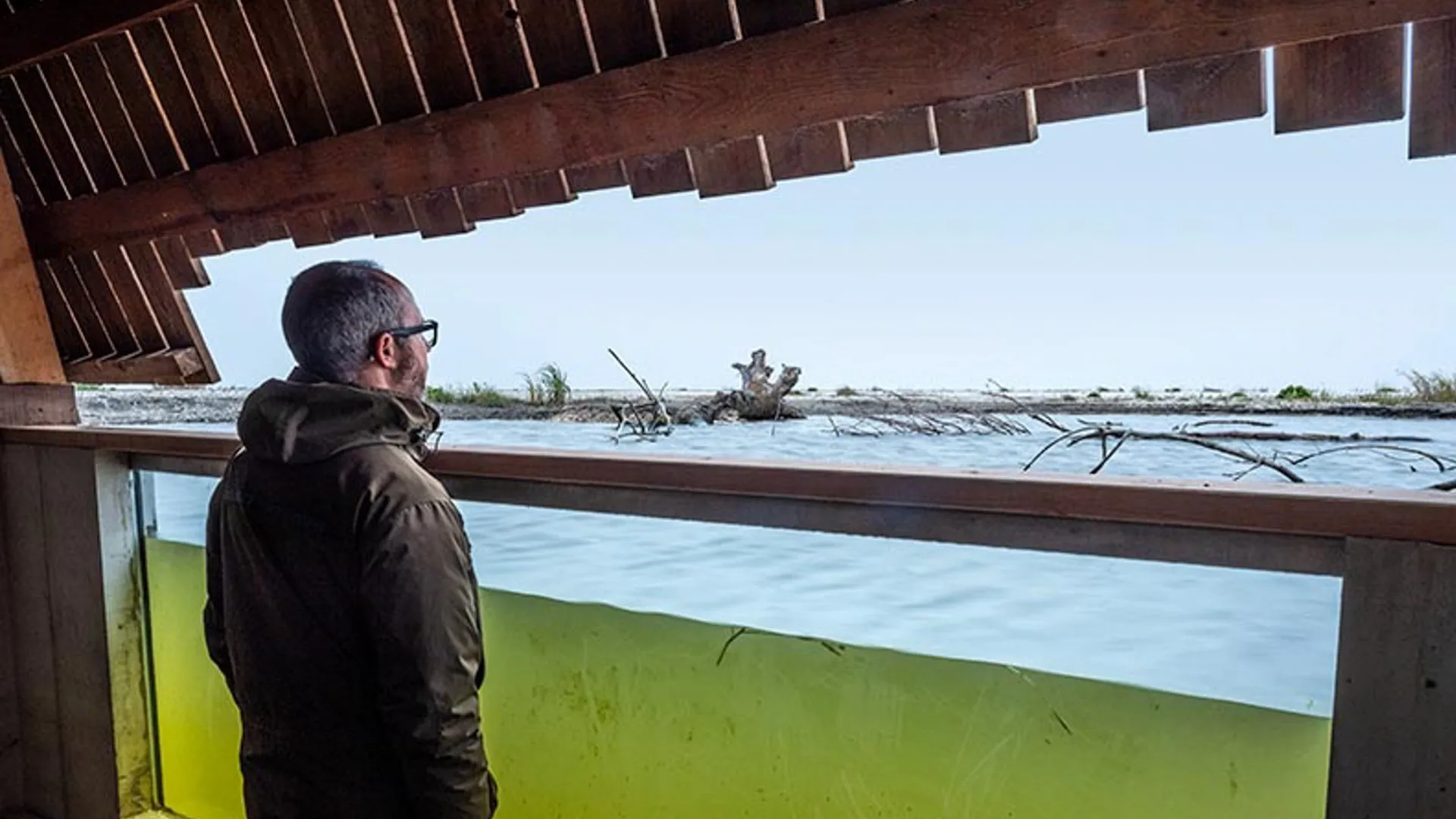- October 18, 2024
- By Brianna Rhodes ’17 And Maggie Haslam
One of the wildest shows in New York isn’t in Manhattan’s theater district, but 30 miles east on Long Island’s Oyster Bay. At a Barbie-pink storybook cottage, amazingly constructed around a grove of saplings that pierce the roof, visitors flock to see red-bellied woodpeckers, chimney swifts and Carolina wrens that unknowingly play a starring role just beyond its walls.
Bird blinds offer a window into the winged world, allowing humans to get close enough to intimately observe and learn from birds in their natural habitats. A new exhibit debuting Friday at the University of Maryland explores the design, novelty, history and impact of these unique structures that mediate the relationship between humans and their feathered friends.
“Seeing Blinds: Architecture for Avian Landscapes” showcases 40 extraordinary examples of avian architecture—from a human-sized birdhouse to an angular refuge from frigid Nordic winds—by contemporary designers and artists from around the world. A culmination of ongoing research by architecture Associate Clinical Professor Michael Ezban, who has studied the design of multispecies environments for 10 years, the exhibit tracks the evolution of these structures from simple shelters to fantastical works.
Bird blinds, or “bird hides,” have a history dating back thousands of years. Originally created for hunting—and still common in waterfowl hunting today—the structures began to be adopted by photographers, ornithologists and birdwatchers in the 19th century. Birdwatching surged in popularity during the COVID-19 pandemic, prompting studies on the connection between the hobby and human health.
Today, architects, landscape architects and artists are enhancing these structures through their artistry along flyways—the arial highways used by the approximately 20% of birds that migrate yearly—to elevate encounters between people and birds in the public realm.
“It’s more than just sitting in a plywood box and watching birds, although that alone can be a beautiful thing,” said Ezban. “All of the blinds in this exhibit function for birdwatching, but they are creatively designed to be enriching and inspirational as well.”
The exhibit includes sonographic recordings of bird calls that would be common in the featured blinds; they play inside a custom-made blind by Ezban and echo throughout the Kibel Gallery.
We share a bird’s-eye view into the exhibit:

Battersea Park Hide
This “temporary” plywood box blind was erected in London’s Battersea Park during the early 2000s. Unique in its construction–and held together with just nylon loading straps—the blind used a series of mirrors to spot the park’s resident tufted duck in the nearby pond. While bird blinds are traditionally in natural settings, the Battersea Park hide’s city-center location shows there are opportunities to engage with wildlife everywhere, said Ezban.

Penguins Plus
This bunker-like bird blind off the southeast coast of Australia offers an eye-level view of the “Penguin Parade” across the island’s beach at sunset. The hide has offered a communal experience for locals and tourists since 2016, and studies have shown that humans and bird interactions offer mental and public health benefits. "Time spent in a blind and attuning to other species helps people to let go of the business and the shuffle of life that is so stressful," Ezban said.

Bird Apartment
Situated high in a tree canopy in Komoro City, Japan, this human-sized birdhouse can accommodate one person and offers up to 80 nest spaces across its front; its feathered guests can be observed from the inside through peepholes. Blinds designed to be cohabitated by people and birds can offer unique, close-up views of avian wildlife that are not usually available, said Ezban.

Marker Wadden Hide
Several blinds of various sizes dot the artificial island chain in the Markermeer, a human-made lake in Amsterdam. The Marker Wadden hide, which is half-immersed in the lake water, offers views of shorebirds and waterfowl in their natural habitat. Ezban’s research has shown him how resilient and adaptive birds are to different environments. “As a passive observer, I've become more and more surprised by how specialized their behavior is, especially their adaptations to the disturbances by human beings to their habitat,” he said.

Confluence Bird Blind
Designed by artist Maya Lin (who also designed the Vietnam Veterans Memorial), this elevated cylindrical blind located on the Lewis and Clark National Historic Trail outside Portland, Oregon, is less about viewing birds and more about bringing attention to their disappearance. Each of its vertical wooden slats is etched with the name and conservation status of the 134 species documented by the explorers in the early 1800s. “The blind is a register of human impact on the environment, and a prime example of how architects can bring both artistry and advocacy to the design of bird blinds” said Ezban.
“Seeing Blinds: Architecture for Avian Landscapes” runs Oct. 18 through Dec. 5 at the School of Architecture, Planning and Preservation’s Kibel Gallery. For gallery hours and more information, visit the gallery’s website.
